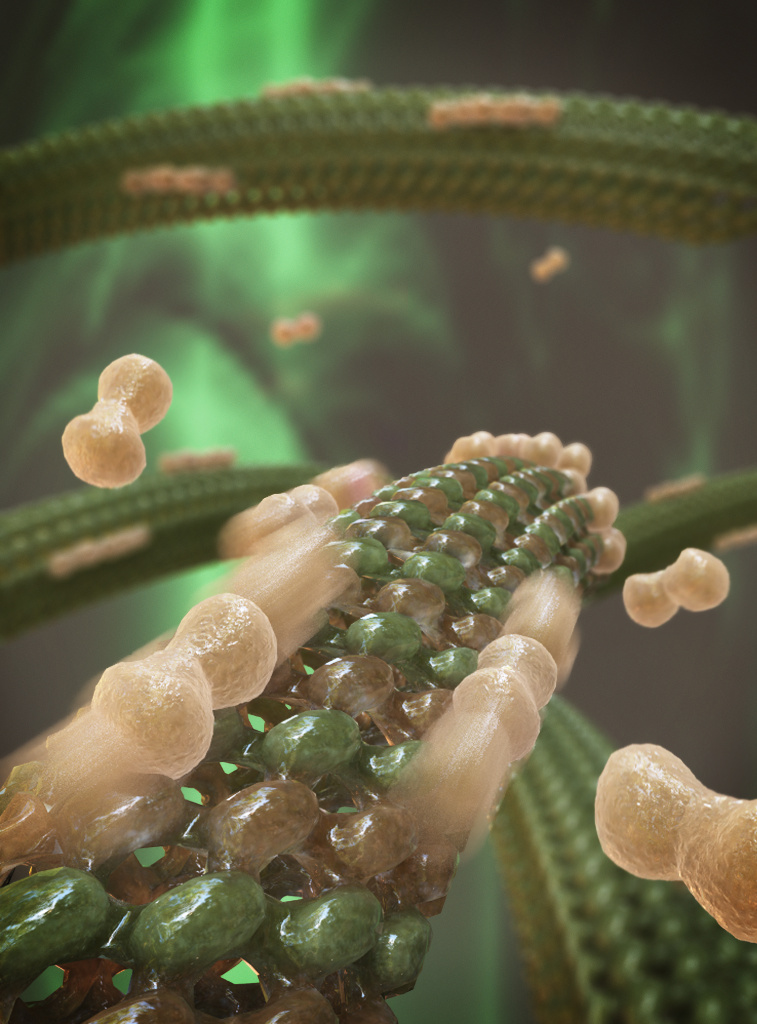Quantifying protein diffusion and capture on filaments
Emanuel Reithmann, Louis Reese and Erwin Frey
The functional relevance of regulating proteins is often restricted to specific binding sites such as the ends of microtubules or actin-filaments. An efficient localization of proteins on these functional sites is of great importance. In this respect, recent experimental studies suggested that several key players involved in regulation of microtubules and actin-filaments utilize a one-dimensional diffusive motion on the filament to target the functional end. For microtubules, it has been suggested experimentally that diffusive motion along the filament strongly enhances the protein’s end-binding efficiency as a prerequisite for catalytic regulatory functions [1]. Since this pioneering work many in-vitro experiments suggested that a broad class of plus-end binding proteins for microtubules undergoes diffusive motion along the filament before binding to the functional end (the “diffusion and capture mechanism”). However, since a thorough theoretical description is missing, a comprehensive understanding how diffusion on these filaments enhances tip-binding has remained elusive. In our manuscript we achieve such a theoretical description and provide a simple – yet fully quantitative – analysis of the process.
Our theory explains how and why end-association due to diffusion and capture is highly efficient as compared to direct tip-binding from solution alone. As a consequence, diffusion and capture substantially enhances the reaction velocity of enzymatic reactions, where proteins and filament ends are to each other as enzyme and substrate. We show that the ensuing reaction velocity can effectively be computed within an effective Michaelis-Menten framework. This approach considerably reduces the complexity of the mathematical problem. Further, the effective theory is completely quantitative in that it depends solely on experimentally accessible parameters.
For typical microtubule-associated proteins our theory predicts that the dissociation constant is reduced by several orders of magnitude with respect to the standard value in absence of diffusion along microtubules. Our theory allows us to rank the contribution of filament diffusion to end-binding quantitatively for many different microtubule- and actin-associated proteins. We predict that diffusion and capture significantly beats the diffusion limit for the rate of direct protein association for practically all proteins diffusing on microtubules and actin-filaments.
The generality and simplicity of our result makes it easily applicable in different fields of research where diffusion on one- dimensional substrates plays a role. This is not restricted to cytoskeletal filaments in cell biology but may well be applicable in genetics where diffusive motion of transcription factors along DNA is a well documented fact.
[1] Helenius et al. (2006), Nature 441:115-9


